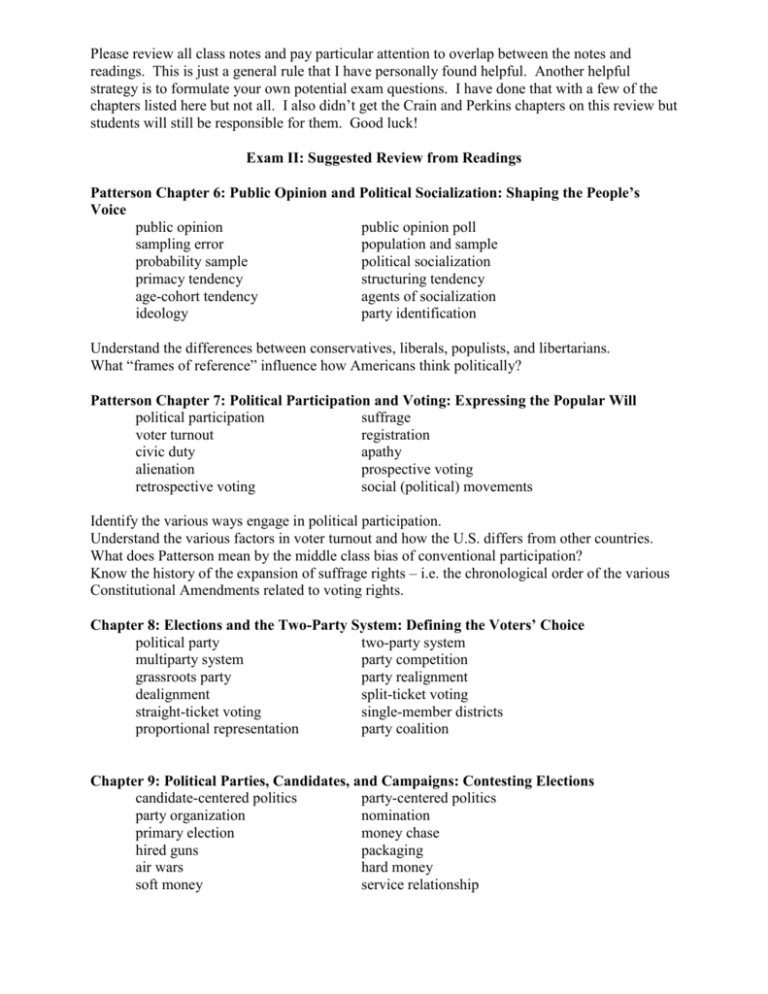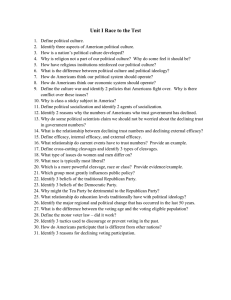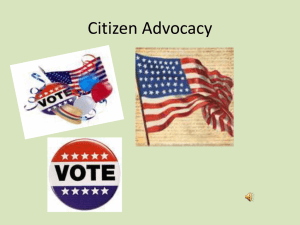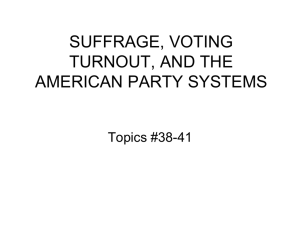Suggested Review for Exam II
advertisement

Please review all class notes and pay particular attention to overlap between the notes and readings. This is just a general rule that I have personally found helpful. Another helpful strategy is to formulate your own potential exam questions. I have done that with a few of the chapters listed here but not all. I also didn’t get the Crain and Perkins chapters on this review but students will still be responsible for them. Good luck! Exam II: Suggested Review from Readings Patterson Chapter 6: Public Opinion and Political Socialization: Shaping the People’s Voice public opinion public opinion poll sampling error population and sample probability sample political socialization primacy tendency structuring tendency age-cohort tendency agents of socialization ideology party identification Understand the differences between conservatives, liberals, populists, and libertarians. What “frames of reference” influence how Americans think politically? Patterson Chapter 7: Political Participation and Voting: Expressing the Popular Will political participation suffrage voter turnout registration civic duty apathy alienation prospective voting retrospective voting social (political) movements Identify the various ways engage in political participation. Understand the various factors in voter turnout and how the U.S. differs from other countries. What does Patterson mean by the middle class bias of conventional participation? Know the history of the expansion of suffrage rights – i.e. the chronological order of the various Constitutional Amendments related to voting rights. Chapter 8: Elections and the Two-Party System: Defining the Voters’ Choice political party two-party system multiparty system party competition grassroots party party realignment dealignment split-ticket voting straight-ticket voting single-member districts proportional representation party coalition Chapter 9: Political Parties, Candidates, and Campaigns: Contesting Elections candidate-centered politics party-centered politics party organization nomination primary election money chase hired guns packaging air wars hard money soft money service relationship Chapter 10: Interest Groups: Organizing for Influence single-issue politics interest group economic groups private (individual) goods material incentive citizens’ (noneconomic) groups purposive incentive collective (public) goods free-rider problems lobbying inside lobbying iron triangles issue networks outside lobbying grassroots lobbying political action committee (PAC) interest-group liberalism Distinguish between the types of citizens’ groups. Understand how groups lobby legislative, executive, and judicial officials. Recognize the flaws in the pluralist argument. Chapter 11: The News Media: Communicating Political Images news press (news media) partisan press objective journalism interpretative reporting descriptive reporting singnaler role agenda setting common-carrier role watchdog role public representative role Crain and Perkins Chapter 3 and 4 Videos: Taking on the Kennedys – on reserve The Thirty Second President – on reserve Free Speech for Sale (on reserve in library under Dr. Jasperson’s name)







